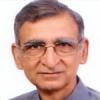Murder of Gauri Lankesh (5th September 2017) came as a big shock to those who uphold progressive liberal values. The same was celebrated by Hindutva supporting trolls, many of who are being followed by none other than Prime Minister Modi. Gauri was not just a journalist but also a leading activist of Bangalore. She was editor of the Kannada magazine, Gauri Lankesh Patrike, taking off from Lankesh Patrike, which was founded by her father. She was strong critique of caste, Brahmanism and Hindu nationalist politics of RSS. She had been sticking her neck out on the issues related to defense of democratic and social rights. She stood for defense of rights of minorities in an unequivocal manner and supported the cause of Lingayat being a separate religion, thereby rejecting the hegemony of Brahmanism, as Brahmanism is the dominant tendency within Hinduism,
As an activist she was a leading figure in Kaumu Sauhard Vedike, a secular group, which was leading the campaigns like those of Baba Budan Giri and opposing the violence against religious minorities. One of the major factors which can define her is that her magazine was in Kannada and did have a strong impact on the local politics. The point that she was against Hindutva, was like those of rational thinkers like Dabholkar, Pansare and Kalburgi (DPK). The impact of her killing has been so strong that there have been nationwide protests; ‘I am Gauri’, paying tribute her upright courage and non compromising stance on political issues. Her own perception of her work got represented in her statement, “... my criticism of Hindutva politics and the caste system, which is part and parcel of what is considered ‘Hindu dharma’, make my critics brand me a ‘Hindu hater’. But I consider it my constitutional duty to continue — in my own little way — the struggle of Basavanna and Dr. Ambedkar towards establishing an egalitarian society.” These are the words of profound commitment of Gauri towards social issues.
The manner of her killing again was like that of the DPK. The angle of her being a fearless journalist is also very much there, as by now many of them have been done to death during last few years. Immediately after her murder many a viewpoints started being articulated. Her brother, who has been having a contrasting ideology said that the act may be that Naxalites, as Gauri was trying to bring some of the Naxalites to the mainstream. Naxalites generally do not hide their acts. His statement seems to be a mere distraction from the truth. Rahul Gandhi stated that "Anybody who speaks against the RSS/BJP is attacked & even killed. They want to impose only one ideology which is against the nature of India." He tweeted, attacking Prime Minister Narendra Modi, "Sometimes the PM speaks under pressure but the entire idea is to crush dissent and this is resulting in a very serious problem in India."
On similar lines prominent historian Ramchandra Guha stated that, “It is very likely that her [Gauri Lankesh’s] murderers came from the same Sangh Parivar from which the murderers of [Govind] Pansare, [Narendra] Dabholkar and [M.M.] Kalburgi came.” The Karnataka BJP Yuva morcha has sent a legal notice to Guha to withdraw his comments. While Nitin Gadkari, top leader of BJP stated that RSS-BJP workers have nothing to do with this. At the same time another BJP MLA said that said that if only Gauri had not written about the celebration of the "death" of the Sangh Parivar, she would probably have been alive today.
While the investigation is on; one can point out the similarity of pattern in murders of Gauri with DPK. While Rahul Gandhi and Guha have expressed their opinion, these opinions seem to have some depth. As such the guilty of such murders are not just those pulling the trigger. Those pulling the triggers are actually tip of the iceberg. It is the prevalence of ‘hate Ideology’ which is at the root of such assassinations. A member of Sanatan Sanstha, a Hindu rightwing ideology has been arrested for earlier murders, and this time around the pattern of murder is just the same.
The best articulation of the role of deeper ideology was expressed by Sardar Vallabh Bhai Patel, in the aftermath of murder of Father of the nation Mahatma Gandhi. Commenting on this Sardar Patel wrote, ““As regards the RSS and the Hindu Mahasabha… our reports do confirm that, as a result of the activities of these two bodies, particularly the former (RSS) an atmosphere was created in the country in which such a ghastly tragedy became possible.”– Sardar Vallabhai Patel, India’s first home minister, on the assassination of Gandhi, in a letter dated July 18, 1948 to Shyama Prasad Mukherjee.(Sardar Patel Correspondence, Volume 6, edited by Durga Das)
While Patel could have stopped at commenting about the dastardly act by Godse, he did not stop at the obvious killer, he went to the roots of ideology and its impact which led Godse to kill Gandhi. Same is true of communal violence in the society. While the perpetrators of violence are being identified, the deeper ideology which creates hatred is being ignored. The pyramid of violence begins with sectarian nationalism, leading to negative perception of religious minorities, this in turn is creating hate and so some leaders can orchestrate the violence. Godse was a RSS trained swayamsevak, who accused Gandhi of harming Hindu interests and appeasing Muslims. Godse later joined Hindu Mahasabha. His statement in court is the elaboration of Hindu nationalist ideology, which targeted Mahatma.
What is clear in Gauri’s murder is that; killers must be steeped in Hate ideology, which is ‘spreading Hate’ in society and that this act of killing is in continuation with the murders of DPK. The Hindu nationalist ideology is the underlying ground on which such violence can stand. Rising sectarianism, intolerance and murders a sequence which one can discern in such murder.





Comments
Add new comment